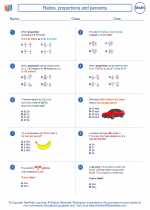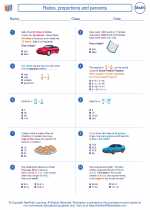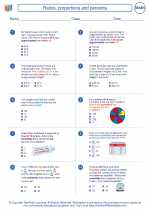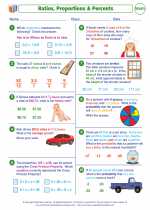Rectangles
A rectangle is a four-sided polygon with opposite sides that are equal in length and four right angles. The formula for the perimeter and area of a rectangle can be derived from its properties.
Properties of Rectangles
- Opposite sides are equal in length
- Each angle is a right angle (90 degrees)
- Diagonals are equal in length and bisect each other
Formulas
The perimeter (P) of a rectangle is the sum of all its sides:
The area (A) of a rectangle is given by:
Example Problems
1. Find the perimeter and area of a rectangle with length 5 units and width 3 units.
Perimeter (P) = 2 * (5 + 3) = 2 * 8 = 16 units
Area (A) = 5 * 3 = 15 square units
2. A rectangle has a perimeter of 24 cm and a length of 7 cm. Find its width and area.
24 = 2 * (7 + w) (Solve for w)
w = 5 cm
Area (A) = 7 * 5 = 35 square cm
Study Guide
When studying rectangles, make sure to understand the properties of rectangles, including their sides, angles, and diagonals. Practice using the formulas for finding the perimeter and area of a rectangle, and solve various example problems to reinforce your understanding. Additionally, learn to apply the concept of rectangles to real-world problems, such as calculating the area of a rectangular room or finding the perimeter of a rectangular garden.
Remember to always label the sides and angles of the rectangle correctly when solving problems, and pay attention to units when working with real-world applications.
Finally, practice drawing and visualizing rectangles to solidify your understanding of their properties and how the formulas for perimeter and area apply to different cases.
.◂Math Worksheets and Study Guides Eighth Grade. Ratios, proportions and percents

 Worksheet/Answer key
Worksheet/Answer key
 Worksheet/Answer key
Worksheet/Answer key
 Worksheet/Answer key
Worksheet/Answer key
 Worksheet/Answer key
Worksheet/Answer key
